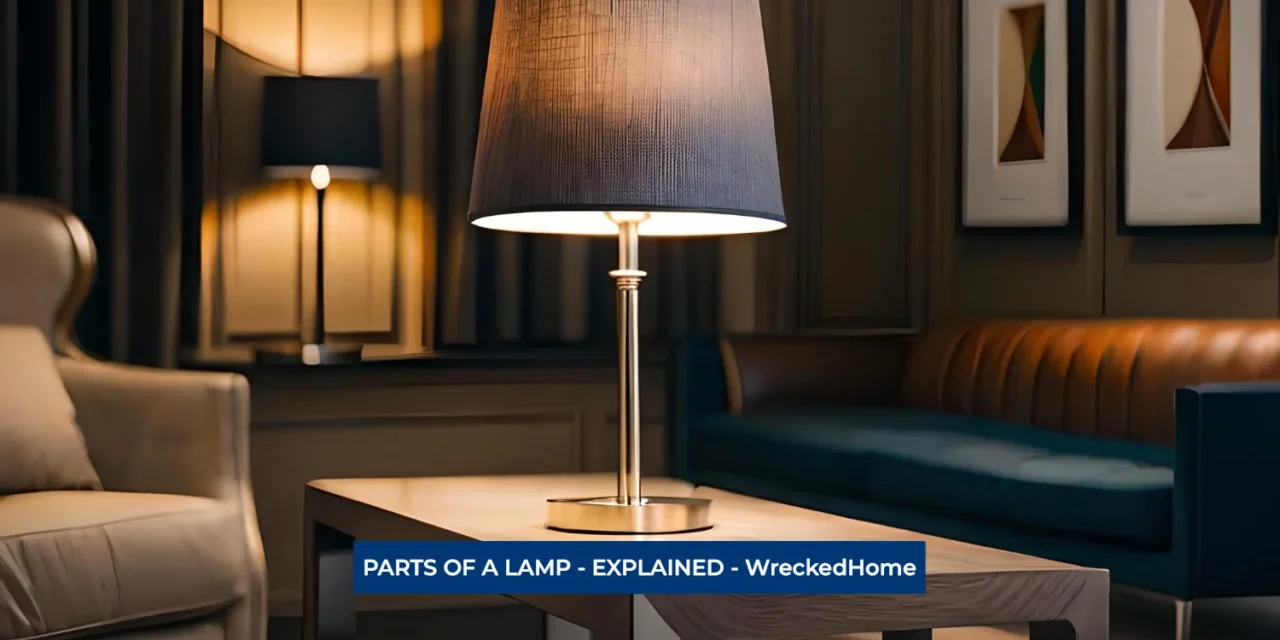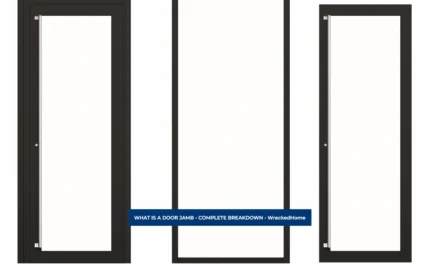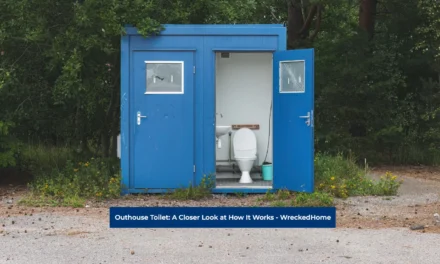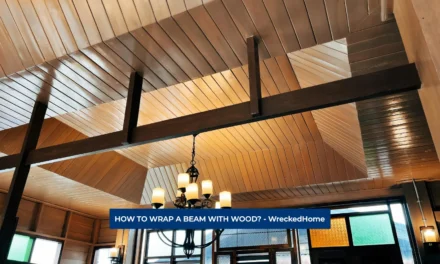Lamps are one of the most common household items that are available in every household. Adding lamps in your house is a great way of creating a comfortable environment, as it adds warmth, color and a focal point to your rooms. Different lamps go with different settings and are designed in beautiful and unique ways. So, you can choose the right one for the desired area in your house.
It is important to understand the anatomy of a lamp so if you face any problems, you can fix it by yourself. So let’s jump right into getting knowledge about the different parts of a lamp and their functionality.
Before that, please take a look at our website. You will find articles that are extremely helpful for fixing many things around the house. This includes electronics or fixtures around the house.
- The Different Parts of a Lamp
- Harps and Harp holder
- Cord and Plug
- Switch
- Housing or Body
- Wire Connections
- Conclusion
- Frequently Asked Questions FAQs
- How should I choose the correct size of lampshade for my lamp?
- What's the difference between incandescent and LED bulbs? Which one should I use in my lamp?
- Can the socket shell of a lamp be replaced, if damaged?
- How to choose the right type of switch for my lamp?
- Can I replace the base or body of a damaged lamp?
- How can I prevent my lamp from sliding on a table or surface?
- What safety measures should be considered when using a lamp?
The Different Parts of a Lamp
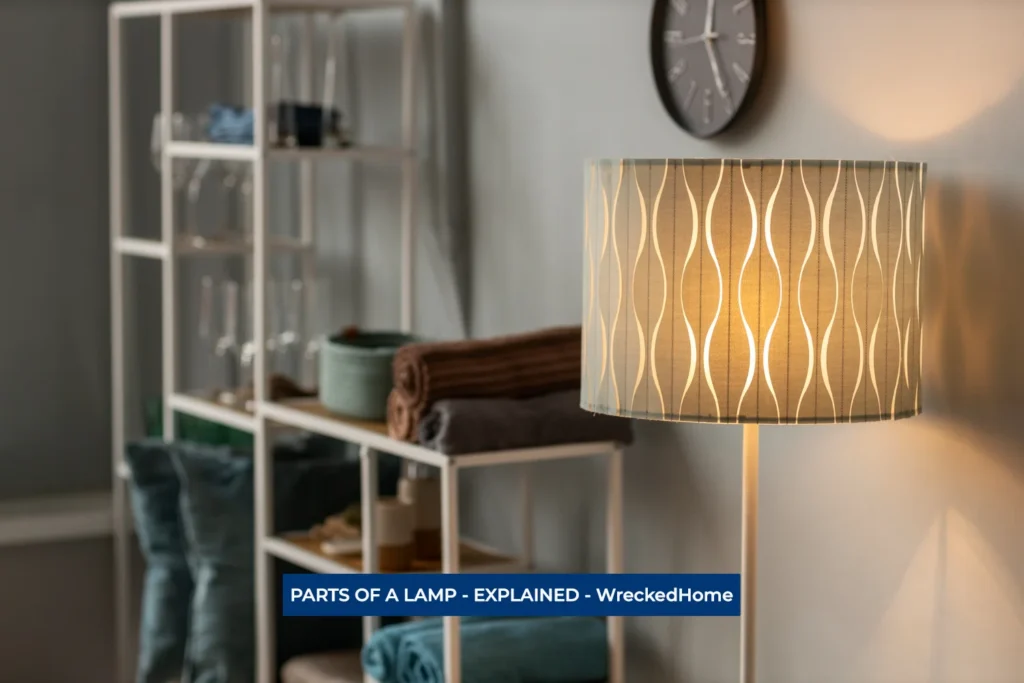
A lamp may look like a simple decorative accessory that provides light in a room, yet all of the parts of a lamp mentioned below come together to build it. Each part has its own qualities, these are mentioned in detail throughout this article.
- Base
- Bulb Socket
- Harps and Finials
- Lampshade
- Cord and Plugs
- Switch
- House or Body
- Wire Connections
- Bulb
Base and Anti-Slip Material
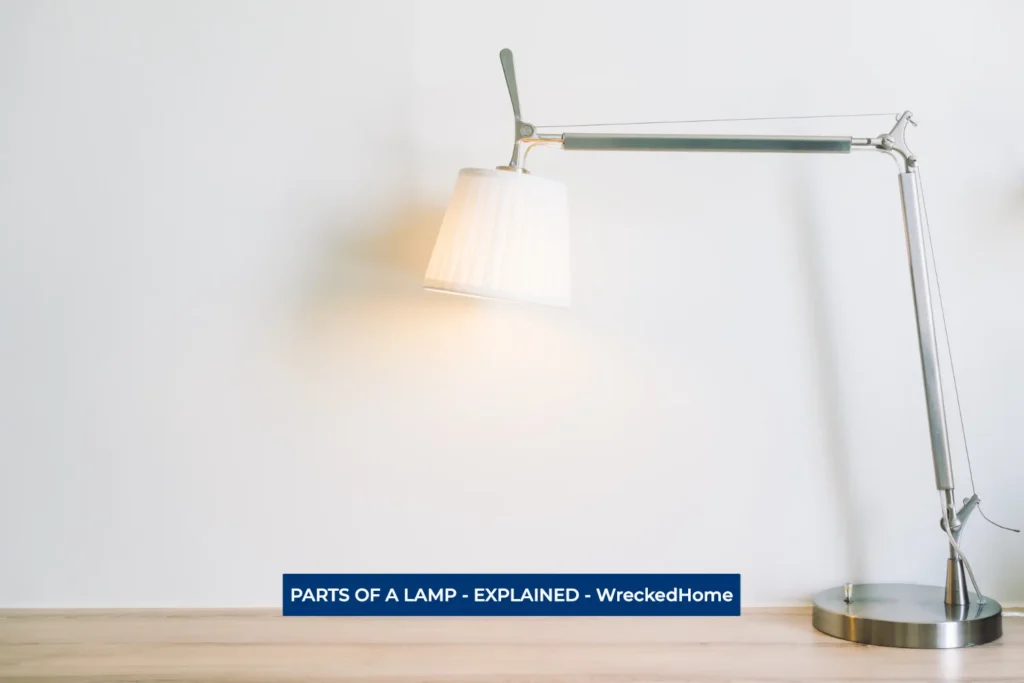
One of the most essential parts of a lamp is its base. This part covers most of the area in the lamp structure. The base not only gives character to the lamp but also adds functionality by giving support. It is made using different materials like ceramic, metal, wood, etc.
Anti-Slip Material: This material is added under the lamp to prevent it from sliding or slipping. It also prevents the lamp from scratching surfaces like table tops for instance. It is made using materials like felt or rubber. It is also pasted on the base of the lamp.
Bulb Socket or Socket Shell
This is one of the most significant parts of a lamp as it holds the bulb in place. Its construction consists of a locking mechanism that is made using thread and pins. It tightly secures the bulb socket with the lamp and connects it to wires which provide electricity to the bulb so it can work properly.
The Bulb sockets are made compatible with all the different types of bulbs that are available in the market like LED bulbs or incandescent bulbs.
Lampshade
The lampshade is one of the most known parts of a lamp. The lampshade diffuses the bulb’s glare since direct light from the bulb is quite bright. This is what makes it one of the most important parts of a lamp. Mostly, lampshades are light weight as their frame is made using metal wires and fabric. However, many other materials are used like plastic or glass today.
Harps and Harp holder
Harps and harp holders helps enhance the functionality of a lamp by providing support to both the shade and the bulb. A Harp is a U-shaped metal bracket that is attached directly to the bulb socket. They also play a significant role in determining the position and height of the lampshade.
The Harp holder, also known as the Finial, is a decorative ornament that is screwed to the harp. It secures the lampshade in place. They are available in different designs which can be geometric, intricate, etc.
Cord and Plug
The cord and plug are essential parts of a lamp because they provide the necessary electric connection to power the bulb. The cord is attached from the bulb socket. It runs throughout the entire base and then extends outside until it connects to a plug. The plug is inserted in the power outlet to turn the lamp on or off. The length of the cord varies and allows flexibility in deciding where to place the lamp.
Many modern day lamp cords come with safety features. One of the most important safety features is the polarized plug. These ensure the lamp is connected to the electric supply correctly.
Visit our store for 10% off our Save Home Energy products here.
Switch
The switch of the lamp has a mechanism that allows you to have control over turning the lamp on or off according to your needs. There are different places on the lamp where it can be located depending on the design; however the most common place is on the cord. Common types of switches include rotary switches, pull chains, push button switches and touch sensitive switches. All of these depend on the design of the lamp. Without the switch, the other parts of a lamp will not function.
Some lamps even come with dimmer switches that allow you to adjust the brightness of the light according to preference.
Housing or Body
The housing body of the lamp is the main structure of the lamp which extends from the base to the top of the lamp. It encloses all the electrical components. This part of the lamp often significantly contributes to the lamp’s overall look. It can be designed in various forms such as the traditional column-style body to more contemporary and artistic designs.
Some lamps are a work of art themselves. They are the one of the most aesthetic parts of a lamp. They can feature intricate carvings, sculptures or stained glass panels whereas, others can be simple, sleek yet contemporary.
Wire Connections
The lamp’s body houses various wires and connections inside that help the flow of electricity from the plug to the bulb. It ensures that these wires are well-insulated and secure to prevent any electrical hazards.
Assembling of the lamp and wire connections is handled by professional individuals who have knowledge of electrical wiring and safety. Moreover, there are two important parts where the wire pass through in a lamp, these are mentioned below:
- Insulation Sleeve: This is a protective covering around the lamp’s electrical wires which ensures that the wires are insulated from the metal components of the lamp. This helps to enhance safety.
- Threaded Tube: This is a plastic or metal tube that runs through the body of the lamp and connects the bulb socket to the lamp’s base. It provides support to the structure as well as it houses the wires.
- Bulb
The bulb is one of the main parts of a lamp as it produces the light that is emitted from it. Bulbs are available in different types, watts and colors. Therefore you can choose a bulb with the illumination that suits your preference.
While purchasing a bulb, make sure that you choose one that is compatible with the lamp socket that you have and the wattage specification.
The two most common types of bulbs are LED and Incandescent. LED bulbs are becoming increasingly popular due to their energy saving quality. However, incandescent bulbs are still preferred by those who want warm and traditional lighting.
Conclusion
Having an understanding about the different parts of a lamp not only enhances your knowledge about these beautiful fixtures but also helps you stay informed when choosing one for yourself. Each component of the lamp: from the base, bulb socket to the decorative parts, contributes to the lamp’s functionality and appearance.
So whether you choose a classic or an artistic design, it will create a source of light and beauty in your living spaces.
Make sure to visit our website for solutions to all your home related issues. Feel free to drop your feedback in the comment section.
For any repairs, installations, builds, or questions; We recommend you to hire a professional. Find A Pro Near You Here!
Frequently Asked Questions FAQs
How should I choose the correct size of lampshade for my lamp?
In order to choose the right size of lampshade for your lamp, you should ensure that its width should be double of the width of the lamp’s base. Moreover the height of the lampshade should be enough to hide the lamp’s socket and switch, if viewed from an eye level.
What’s the difference between incandescent and LED bulbs? Which one should I use in my lamp?
The difference between the two is that LED bulbs are more energy-efficient, have a longer lifespan and are suitable for most lamps. Incandescent bulbs are traditional but less energy efficient. The choice depends on your personal preference of energy efficiency and lighting.
Can the socket shell of a lamp be replaced, if damaged?
Yes, you can replace the socket shell. However, it’s important to make sure that the socket shell you are replacing is compatible with your lamp’s bulb type and wiring. Similarly, most parts of the lamp can be replaced unless they are broken.
How to choose the right type of switch for my lamp?
Choosing the right type of switch for your lamp depends on your personal preference and the design of the lamp. Common types of switch include pull chains, rotary switches, push-button switches, and touch-sensitive switches.
Can I replace the base or body of a damaged lamp?
Yes, the damaged lamp base or bodies can usually be replaced. However, it is recommended that you consider a professional repair service if needed. They will ensure to repair it by using reliable materials so you can have year’s of use.
How can I prevent my lamp from sliding on a table or surface?
To prevent your lamp from sliding on surfaces you can use anti slip pads under the lamp. These are usually made from materials such as rubber or felt pads. They prevent your lamp from sliding and protect your furniture from scratches.
What safety measures should be considered when using a lamp?
Ensuring safety measures is important while using a lamp. Therefore, make sure that the cord and plug are in optimum condition, use bulbs that have the correct wattage, and never place flammable materials near the lampshade. It’s also advised that you consider the safety guidelines provided by the manufacturer.

